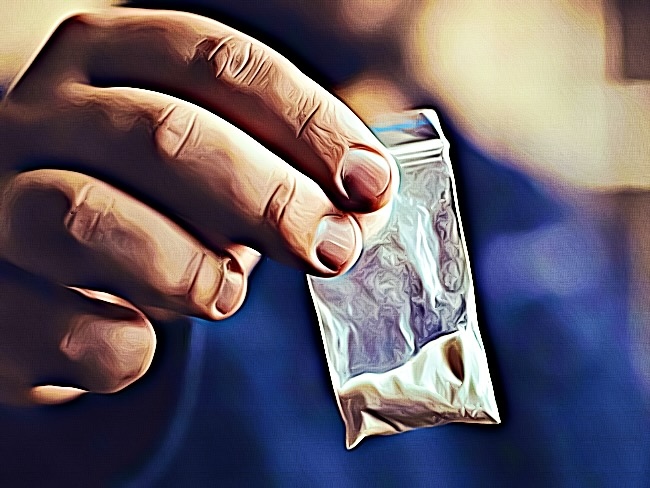Everything That You Need to Know About Crack Cocaine
Crack cocaine is an addictive drug made from the leaves of the coca plant. When smoked, it produces euphoria that can last up to fifteen minutes and makes the user want to use it again. Continued use of crack can dominate the abuser’s life, causing devastating physical, mental and social damage.
If you are struggling with crack addiction, it may feel like a life without crack is impossible. But with support from friends, family, and addiction counselors, you can achieve long-term sobriety. Aside from getting the support you need, it’s also important to be as informed as possible on this subject. To help you out, here’s a thorough discussion on everything you need to know about crack cocaine.
What Is Crack?
Crack cocaine is a powerful form of cocaine that comes in solid blocks or crystals that vary in color from yellow to pale rose or white. Crack cocaine is smoked after being heated. It gets its name from the loud cracking sound it makes as it cools down. Crack cocaine is extremely potent and gives a very intense, rapid high. It is the riskiest version of cocaine to use, being very addictive and dangerous for the health when used over long periods of time.
The effects of smoking crack are intense and immediate, but they are short-lived, too. Plus, if someone smokes crack instead of snorting it (inhaling it through the nose), then an addict can become addicted after the first time he or she uses crack.
Cocaine costs a lot of money, which is why it has long been considered a “rich man’s drug.” Crack, on the other hand, is sold for such low prices that even teens can afford to buy it—at first. The truth is that once a person is addicted to crack, their expenses skyrocket with the increasing amount needed to support the habit. This can make addicts incredibly susceptible to erratic and harmful behavior.
How Is Crack Different From Cocaine?
Now, this is a trick question. Despite how different they look from one another, these two drugs are virtually the same and have no pharmacological differences. Cocaine and crack are both abused for their stimulant properties. It’s easy to assume that cocaine is the more dangerous of the two, but in fact, there’s no difference in the way they affect your body or the risks of addiction and overdose that they carry. In short, both are equally hazardous.
When it comes to differences, the only notable thing to mention is their physical attributes. Cocaine is a powder, and crack is a rock-like substance. However, the key difference between the two drugs lies in how they are taken: cocaine can be smoked, snorted, or injected, while crack must be smoked. Because of the many methods of cocaine use, it also tends to be more expensive than crack.
Users of both crack and powder cocaine are affected by the drug similarly, but the effects of crack come on more quickly, and it wears off sooner. Because crack is more potent than powder cocaine, users who snort powder cocaine are more likely to become dependent on it than users who smoke crack.

What Are the Effects of Crack?
Crack cocaine initially feels pleasurable because it increases the levels of dopamine in the brain (the chemical that makes us feel happy). This is followed by a comedown that is deeper than before the drug was taken. It usually lasts up to around ten minutes.
The effects of crack take over quickly. Here are the most common effects associated with crack:
- Euphoria: Euphoria is intense and induces a state of hyperawareness. It also gives users a feeling of superiority and drastically lowers inhibitions.
- Depression: Once the euphoria dies down, users tend to crash and become depressed and aggravated. This can lead them to be hostile, paranoid, and anxious.
- Physical Reactions: Users sometimes experience a greatly elevated heart rate, convulsions, muscle spasms, and dilated pupils, along with nausea and rapid breathing.
Aside from the short-term effects that we’ve discussed above, it’s also important to note that crack also comes with long-term effects. Here are a couple of the most common long-term effects attached to crack use:
- Insomnia: Crack can lead to insomnia and a loss of appetite.
- Sexual Dysfunction: Crack can cause infertility for both men and women.
- Damaged Blood Vessels: Crack use has led to damage to blood vessels, high blood pressure, damage to coronary arteries, and failure of the kidneys and liver
- Respiratory Damage: Users of crack cocaine are more susceptible to lung and respiratory damage due to the way they ingest the drug. Smoking crack causes lung damage; bleeding and excess mucus, both of which trigger coughing.
Users of crack cocaine can also suffer a number of oral problems. The pipe in which they inhale the smoke is short, which means that the lips burn in contact with the metal. Their teeth are also inserted into the smoke, which can result in extreme tooth decay.
What Are the Side Effects of Crack?
Long-term use of crack can lead to long-lasting side effects. Using crack cocaine has many negative effects, including damage to most of the body’s vital organs, such as the liver, kidneys, and heart. In addition, crack cocaine users are more susceptible to infections because the drug compromises the immune system.
Other dangers of using crack cocaine over a long period of time include:
- Liver damage
- Lung damage
- Depression
- Permanent damage to blood vessels
- High blood pressure
- Abscesses
- Malnutrition
- Severe tooth decay
- Psychosis
- Paranoid behavior
- Kidney failure
- Stroke
- Heart attack
- Death
- Reproductive damage and infertility
- Exhaustion
- Irritability
- Increased frequency of risky behavior
What Are the Withdrawal Symptoms Associated with Crack?
Due to the many adverse side effects of crack, it’s not really surprising to know that many people attempt to stop taking the drug. However, this is easier said than done as crack is extremely addicting. To add to this, crack also comes with a slew of withdrawal symptoms that make quitting the drug infinitely more difficult.
Crack cocaine users have a different experience of withdrawal. It is not as obvious as that of heroin or benzodiazepines. People who suffer from crack addiction may not shake as they go through withdrawal, nor do they vomit or sweat profusely. However, just because the effects are not visible does not mean that the withdrawal is easy. Here are the most common withdrawal symptoms associated with crack:
- Depression
- Irritability
- Extreme fatigue
- Increased appetite
- Increased need for sleep
- Vivid nightmares
- Anxiety
- Severe drug cravings
- Psychosis
Take note that the severity of the withdrawal symptoms will depend on an individual’s drug usage. The extent of addiction, length of time that the drug was used, and frequency of use are all factors that need to be considered.
Conclusion
We hope this article proves to be useful when it comes to helping you further your understanding of crack. Be sure to keep everything we’ve discussed here in mind so that you can make the most informed decision regarding this drug. If you are struggling with crack addiction, it would be best to consult with professionals.




